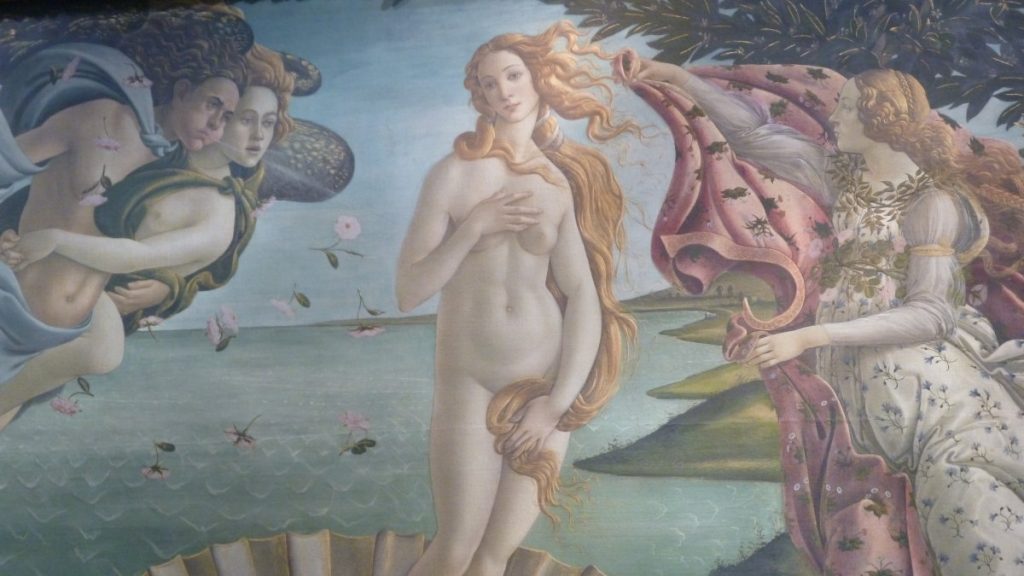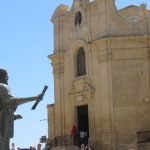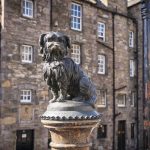This episode is devoted to the Uffizi, Florence’s world-famous art gallery. First, there is a short history of the gallery and then an overview of its treasures, focussing on a number of highlights by Italian painters. These include three glorious Madonnas (by Ducio, Cimabue and Giotto respectively) displayed together, plus the most visited paintings in the whole gallery, namely Botticelli’s Primavera and The Birth of Venus. We finish with a well-known double portrait of the Duke and Duchess of Urbino by Piero della Francesca and in each case the descriptions are supplemented by useful background information. But yes, we’re really just scratching the surface of the treasures within this globally renowned, must-see gallery.
a little history
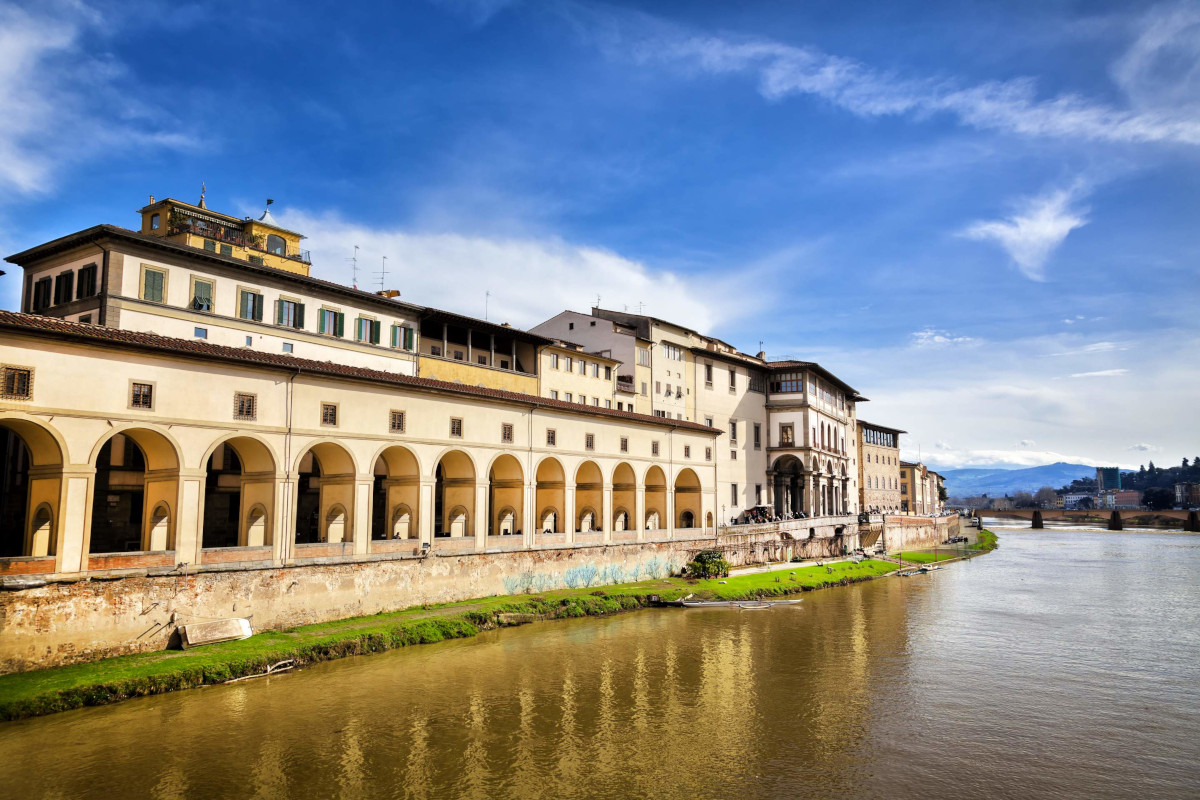
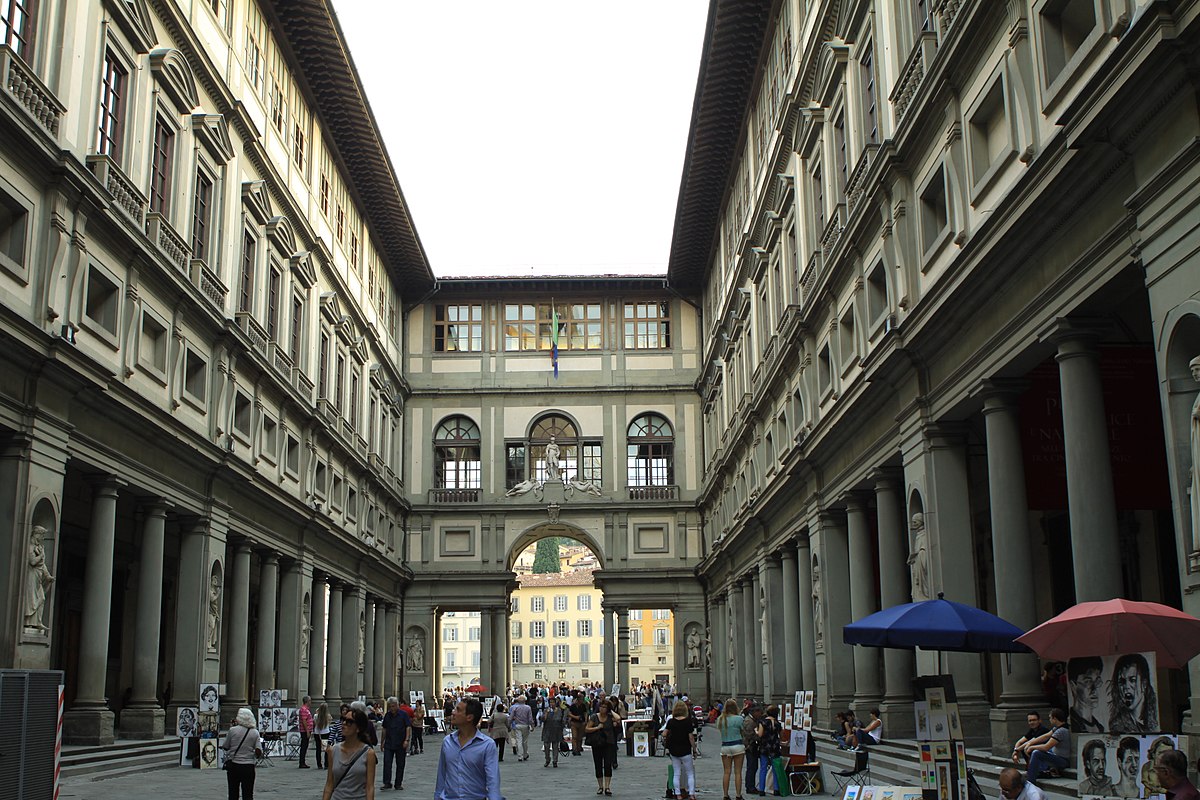
The building was designed by Giorgio Vasari in the 1560s, as offices for Duke Cosimo de Medici I, hence its name – ‘Uffizi’ is Italian for offices. When it was finished, the architect added the Vasari corridor, connecting the building where his boss worked to the Palazzo Vecchio where he lived so that there would be a safe route between the two. Generations of Medici added to the art collection stored here and when the last family member – Anna Maria Luisa – died childless in 1743, she left the whole lot, including the building, to, as she wrote in her will, ‘the people of Florence, never to be moved.’
In the 19th century, many statues were transferred to the Bargello and antiquities to the Museo Archeologico, so today the Uffizi collection is mainly paintings and drawings. It has been called ‘the finest picture gallery in Italy’
3 madonnas
The Uffizi is vast! You definitely need a plan, in both senses, ie both a map and a strategy. But the 100+ rooms are arranged roughly chronologically, covering works from the 13th to the 18th centuries and also according to various logical categories: by geography, with, for example, rooms on Venice and Siena and on Spanish, Dutch, French and Flemish art; and also by artist. Some rooms are dedicated to particular artists, for example Lippi, MIchelangelo, Raphael, Leonardo da Vinci, Caravaggio and Titian.
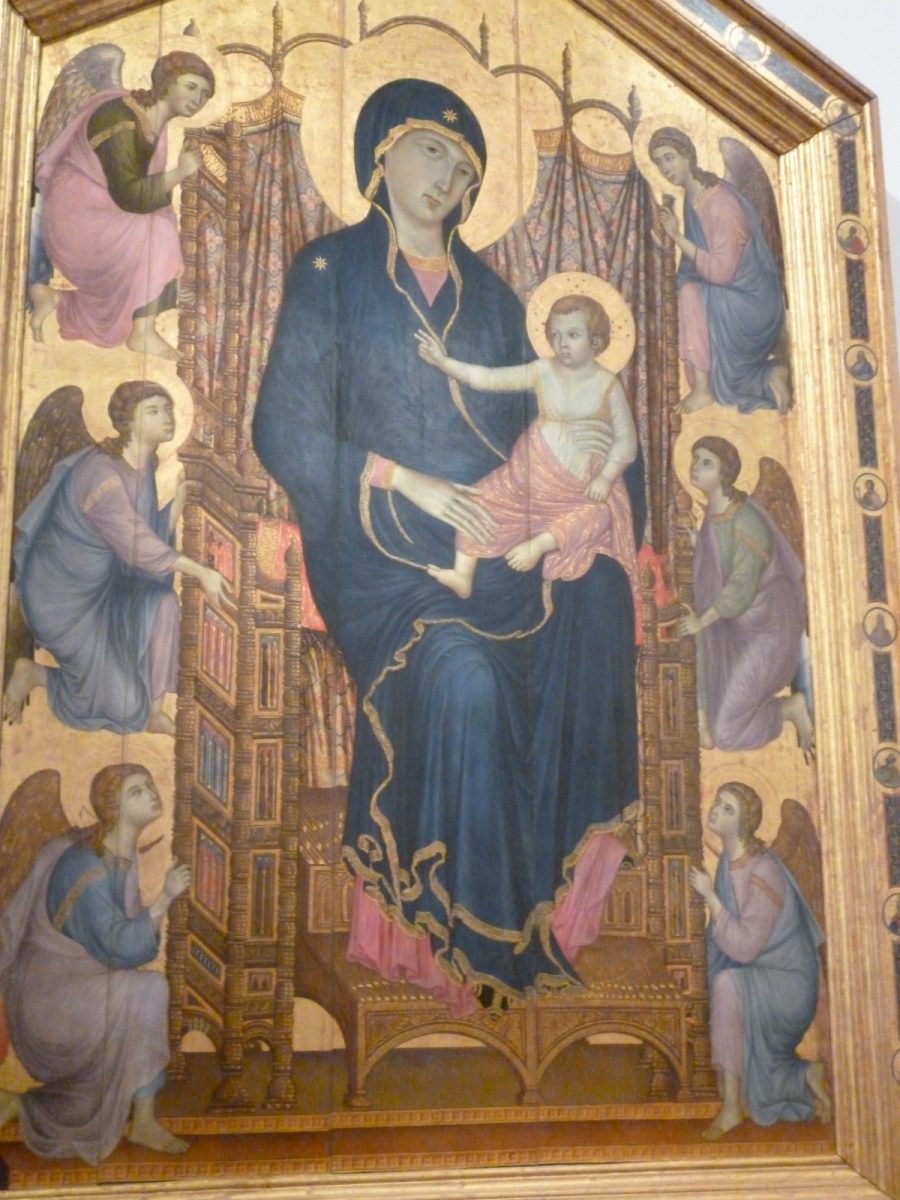
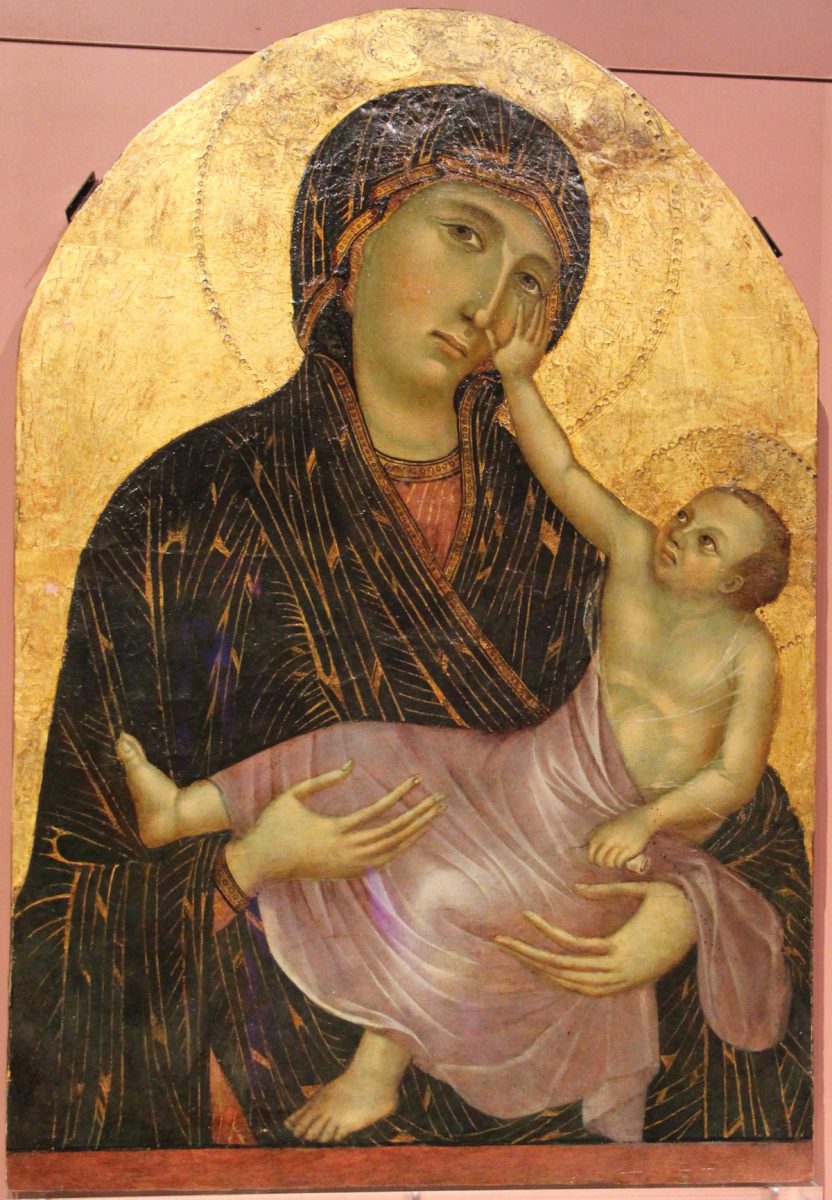
Three madonnas by different medieval artists make a stunning display. One by Duccio, painted around 1285, originally to hang in Santa Maria Novella, shows the virgin and her child surrounded by angels. At 4.5 x 3 metres, it’s the largest surviving 13th century work. Cimabue’s Madonna, also painted around 1285, was destined for Santa Trinita and shows some Byzantine influence, using lots of striking gold colour. Giotto’s Madonna, painted a generation later in about 1310, has been called ‘the first painting of the Renaissance’. It shows a more ‘human’ figure and uses colour, light and shade to represent the folds in the virgin’s dress, a more sophisticated technique than that of Cimabue who represented them by golden lines of paint.
botticelli at the uffizi
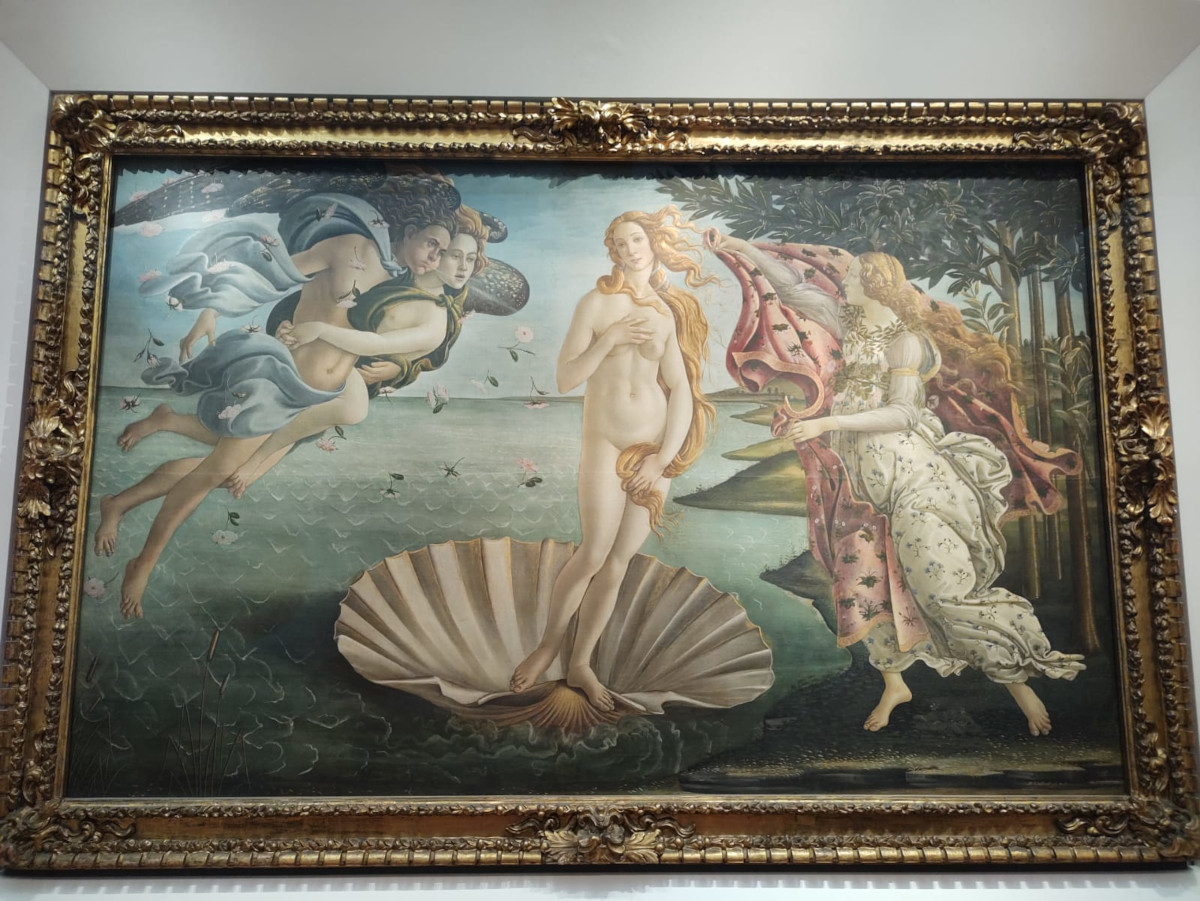
The Botticelli rooms are the largest in the gallery and also the most visited. Here you can see two large canvases believed to have been painted for the Medici family, possibly as wedding gifts. His Birth of Venus shows the moment from the legend when Venus, who’d been conceived when her father Uranus fertilised the sea, emerges from the waves. The winds will blow her to the shore, where nymphs wait to strew her with roses to cover her nudity. Ruskin saw it as a renaissance work, describing Botticelli as ‘the man in whom the spirit of Greece was born again’. The art historian E H Gombrich admired this ‘delicate beauty wafted to our shores as a gift from Heaven’.

Primavera, which hangs nearby, is another painting with a mythical theme. It depicts Roman gods in a Tuscan setting, showing Cupid, the god of erotic love, hovering over other figures from classical mythology in a spring garden. The meaning has been much discussed – it’s sometimes referred to as ‘one of the most written about paintings in the world’, but the presence of Flora, the goddess of fecundity, strewing flowers, is often taken as a sign that the painting was originally intended as a wedding gift, perhaps for young members of the Medici family. Venus, goddess of love is also present, as are the three graces, traditionally believed to bestow the gifts of mirth, elegance and beauty.

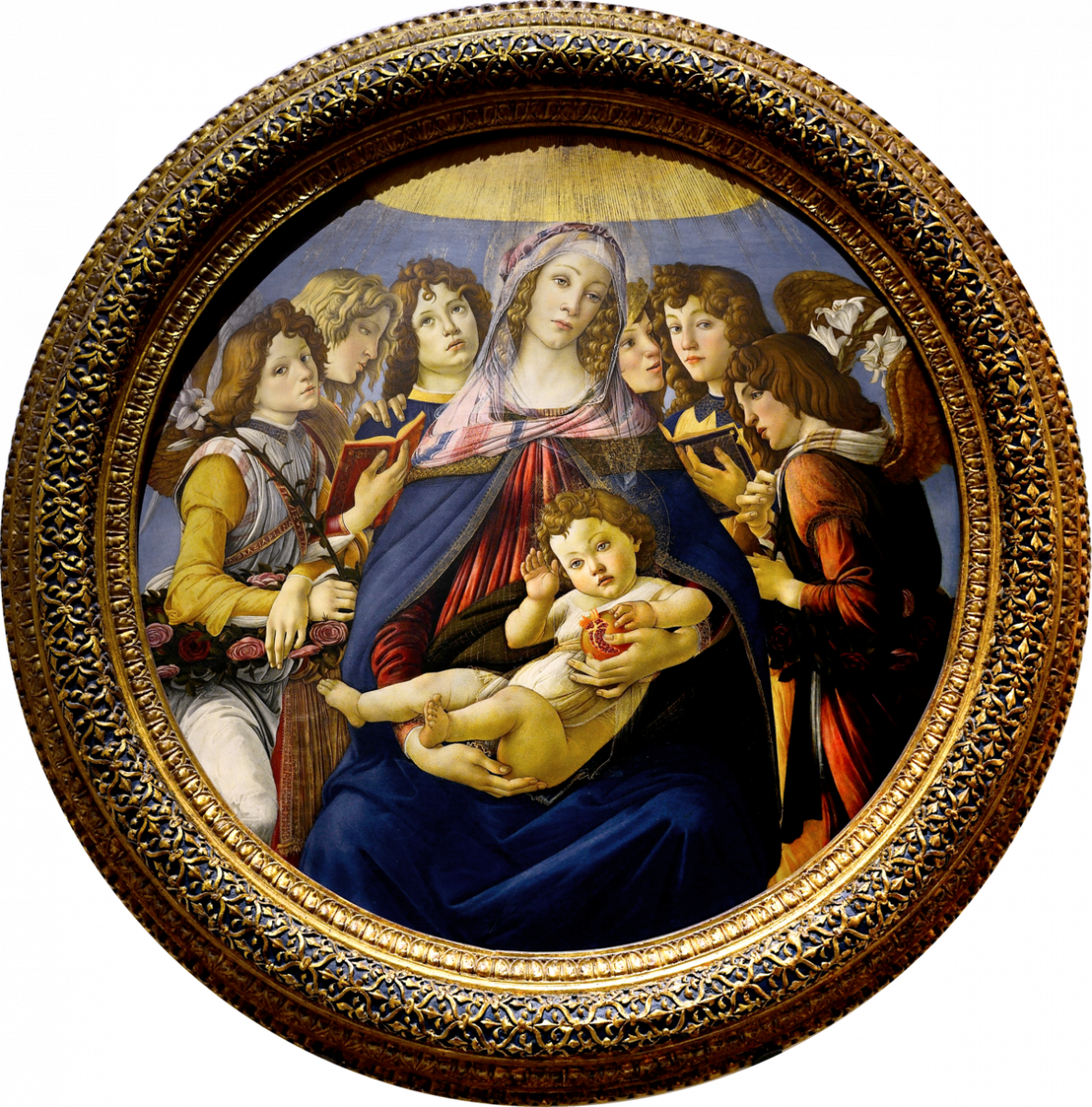
These works have pagan themes, but Botticelli painted Christian works too, such as the two Madonnas here which are both ‘tondos’, that is painted in a round form. The Madonna of the Pomegranate shows Mary holding the fruit which was both a symbol of suffering and one of rebirth – because the seeds would grow. Mary’s sad, reflective expression conveys to us that she is contemplating the suffering her son will undergo. The Madonna the Magnificat shows Mary being crowned by angels as she writes the Magnificat, the famous prayer she made after the angel told her that she would give birth to the son of God.
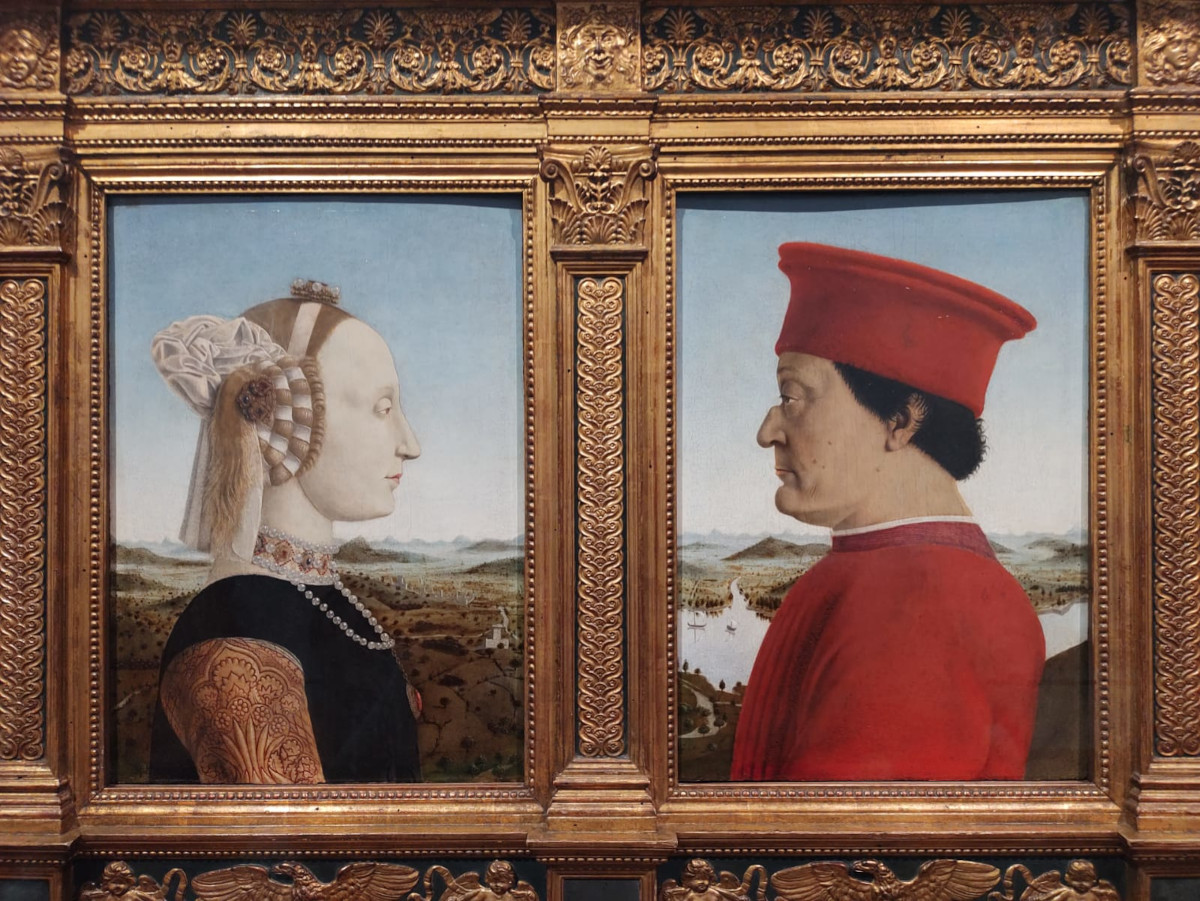
A well-known diptych here is Piero della Francesca’s double portrait of the Duke of Urbino and his wife, behind which lies a true and very sad tale. The duke, Federico da Montefeltro married his wife Battista Sforza when she was just 14. They had eight daughters and then she prayed for a son, offering her life to God if one were born. In 1472 she did indeed give birth to a boy, but she died six months later of pneumonia. It is said that her husband commissioned this portrait as a memorial to her.
Listen to the POdcast
Reading Suggestions
Uffizi Gallery The Official Guide
The Uffizi Gallery The Masterpieces
Botticelli by Barbara Deimling
links for this post
Previous episode Michelangelo’s Life and Work in Florence
Next episode Florence: History and Travel Writing
Last Updated on November 5, 2025 by Marian Jones

